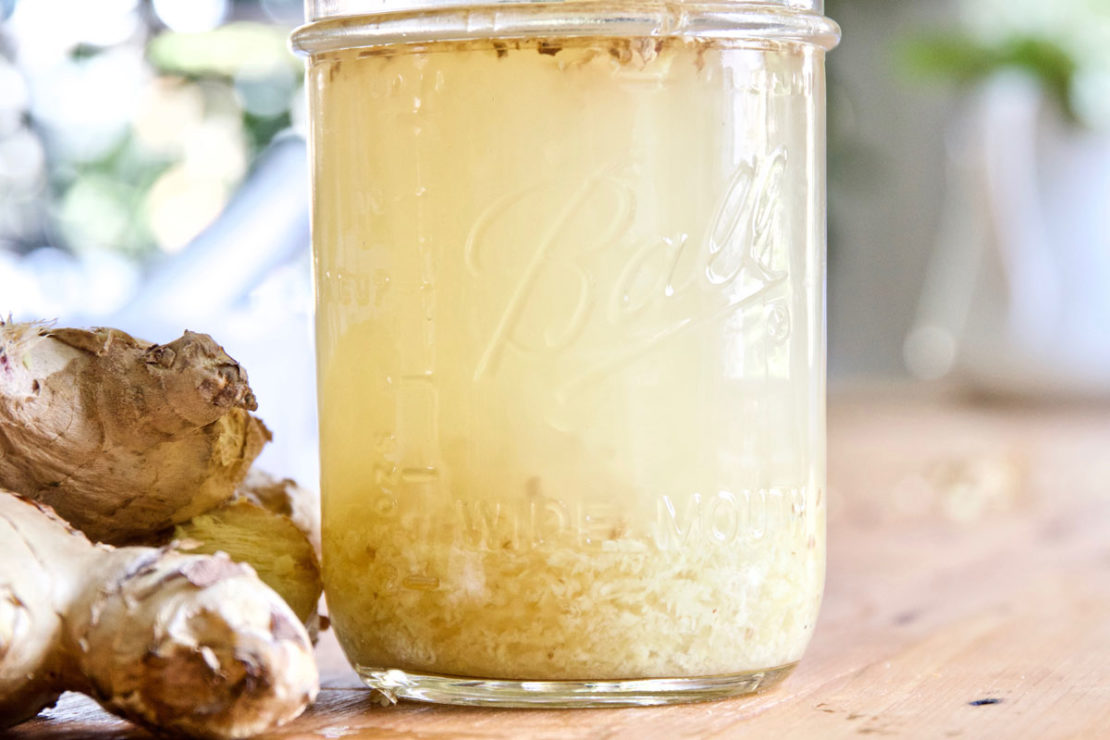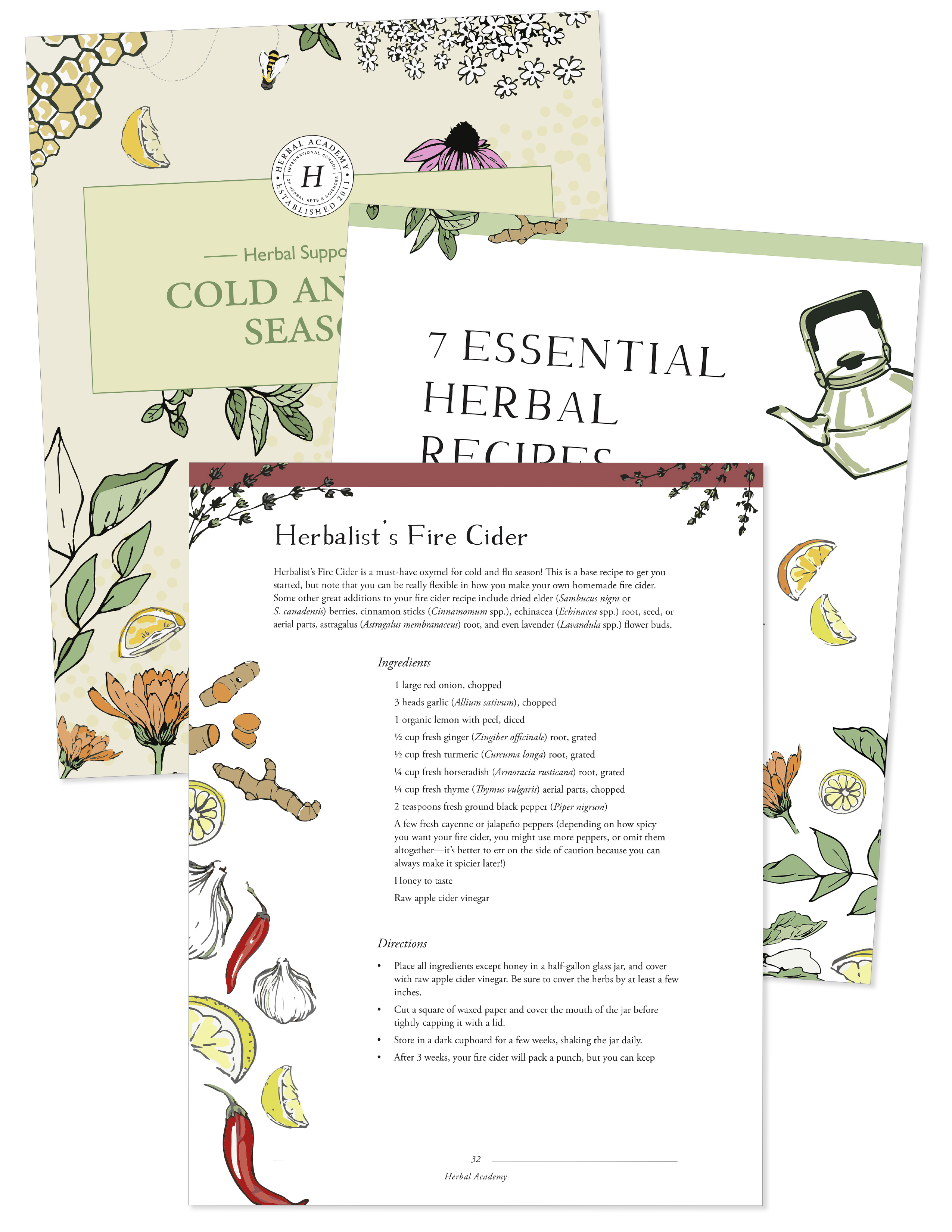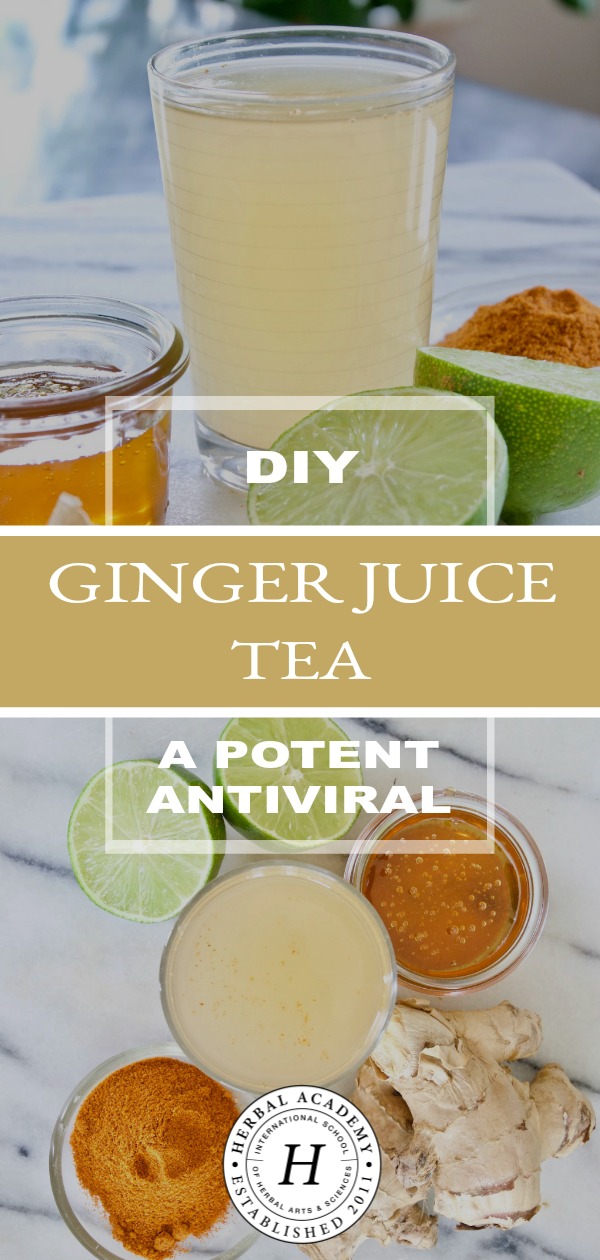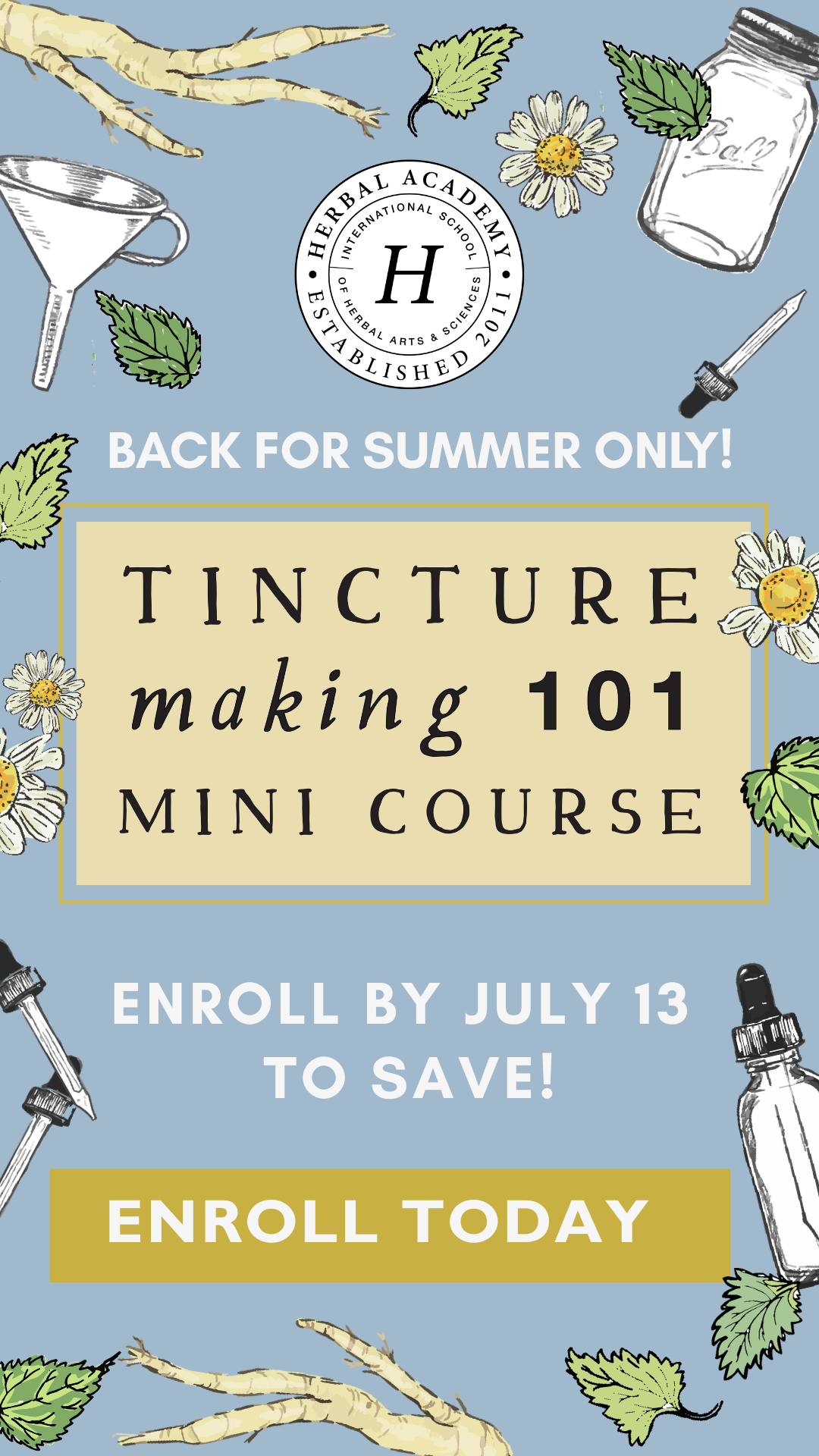
DIY Ginger Juice Tea: A Potent Antiviral
Have you ever heard of ginger juice? If not, listen up because we want to tell you about an herb that we turn to early on when cold and flu season shows up in our homes.
In this article, we’re going to share a bit of information about the ginger rhizome and how it can have a very potent antiviral effect on the body when used at the first sign of a viral illness, allowing one to recover more quickly or to avoid getting as sick in the first place. We’ll also share a couple of ways you can use ginger when those first symptoms show up, including how to make a DIY ginger juice tea!
Ginger: A Potent Antiviral
Ginger (Zingiber officinale) rhizome is an herb that can be found in most every grocery store.
This pungent root’s culinary and herbal uses are detailed extensively in early Chinese medicine, ayurvedic medical texts, and ancient Roman, Greek, and Arabic traditions.
Ginger eases pain and inflammation, soothes nausea as well as gas and cramps in the digestive tract, stimulates the appetite and bile secretion in the liver, stimulates the circulatory system and promotes sweating, loosens trapped mucus in the lungs, and is antimicrobial.
While ginger is clearly an herb with many uses, its antimicrobial activity, ability to thin mucus, and diaphoretic action are the actions that help the body progress in resolution of a cold or the flu.

Ginger’s volatile oils stimulate the immune system to fight both bacterial and viral infections (McIntyre, 1996). It is an all-around warming immune stimulant that is delicious and useful in beverages for cold and flu. Many herbalists use it at the first signs of viral infection and find that it can abort the onset of upper respiratory infections (Holmes, 1997). Ginger’s antiviral actions include stimulating macrophage activity, preventing viruses from attaching to cell walls, and acting as a virucide (Buhner, 2013). Ginger is traditionally used fresh, as the antimicrobial action is most effective in the fresh rhizome.
Fresh-pressed ginger juice diluted in water or a tea made with fresh ginger is ideal for this use. In fact, Herbalist Stephen Buhner (2013) states, “If you are using ginger as an antiviral, the fresh juice cannot be surpassed in its effectiveness” (p. 168).
While using fresh ginger juice tea is an excellent way to obtain the potent antiviral properties of this herb, for those who don’t have a juicer or can’t juice that much ginger, there is another great option for you—fresh ginger infusion.
Below, we’re sharing our recipe for making freshly squeezed ginger juice tea or a fresh ginger infusion. Whichever option is most doable for you, we would encourage you to give this preparation a try the next time those pesky cold and flu symptoms show up in your home.
Freshly Squeezed Ginger Juice Tea +/or Fresh Ginger Infusion
Ginger Juice Tea
Fresh ginger juice tea is a potent antiviral and is often one of the first herbs we turn to when a viral infection seems imminent. The chopped or grated rhizome can also be used if juicing isn’t possible.
Adapted from Stephen Buhner’s Herbal Antivirals (2013).
1 large ginger (Zingiber officinale) rhizome
1½ cups water
1-3 tsp raw honey
⅛ tsp cayenne (Capsicum annuum) pepper
Squeeze of lime (optional)
- Select four thumb-sized pieces of ginger rhizome.
- Using a juicer, process the ginger and capture the juice—the goal is to get ¼ cup of juice.
- Save the fibrous ginger material.
- Bring water to a boil.
- To make the ginger tea, combine ¼ ginger juice with just-off-the boil water, then add the honey, lime, and cayenne. Stir thoroughly.
- Drink 4-6 cups of ginger juice tea per day during acute infection. Store in the refrigerator for up to 24 hours before making a fresh batch.
- If you don’t have a juicer, you can chop or grate the ginger finely and infuse in just-off-the-boil water for 2-4 hours, covered, and then proceed to add the rest of the ingredients. You can also use this method to prepare the fibrous ginger material left over from juicing.
Be Prepared for Cold & Flu Season!

Learn even more about using herbs to support the body this season with our FREE ebook, Herbal Support for Cold & Flu Season!
Not only will you learn about healthy lifestyle changes that can help keep colds and the flu at bay, but you’ll also learn about 6 must-have herbal allies for the season as well. We’ll also share 7 of our favorite cold and flu season herbal recipes—many that use the aforementioned herbal allies. These recipes can help stimulate your immune system, support your body to recovery from viral illnesses quickly, ease spasm-like coughs, and cool hot bodies when fevers are present.
Get your free ebook and prepare for cold and flu season right here!

REFERENCES
Buhner, S. (2013). Herbal antivirals. North Adams, MA: Storey Publishing.
Holmes, P. (1997). The energetics of Western herbs: A materia medica integrating Western & Chinese herbal therapeutics (Vol. 1). Boulder, CO: Snow Lotus Press.
McIntyre, A. (1996). Flower power . New York, NY: Henry Holt and Company, Inc.







